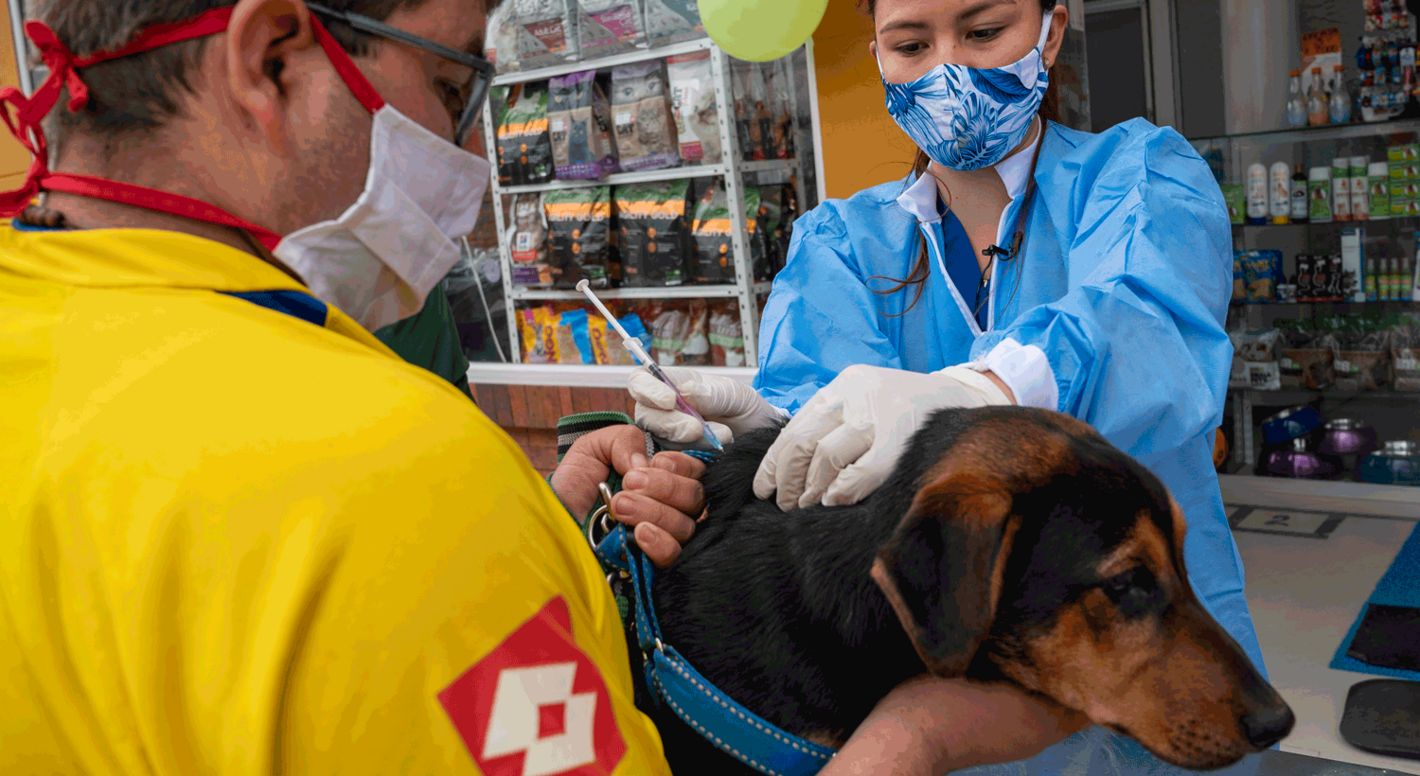
PAHO urges the countries to renew their commitment, regardless of the COVID-19 pandemic, to the elimination of human rabies transmitted by dogs in the region of the Americas
Rio de Janeiro, Brazil, 28 September, 2021 (PANAFTOSA/VPH-PAHO/WHO) - The World Rabies Day (WRD), established by the Global Alliance for Rabies Control (GARC) and recognized by the World Health Organization (WHO), is celebrated every 28 September in order to remind that preventing animal rabies does not only protect animal health but also the health of humans and the environment.
In this regard, the theme chosen for the WRD this year is “Rabies: facts, not fear", highlighting the importance of raising awareness on the disease, vaccinating the animal population and educating people on the danger of rabies and how to prevent it.
The COVID-19 pandemic has raised many misconceptions and fake news about diseases, their dissemination, and vaccination in general. Nevertheless, the debate about vaccines has also raised global awareness on their importance for saving lives.
The Pan American Center for Foot-and-Mouth Disease and Veterinary Public Health of the Pan American Health Organization is responsible for the “Regional Program for the Elimination of Human Rabies Transmitted by Dogs” as from 1983. Since then, the incidence of the disease in the Americas has been reduced by around 98%, with 4 human deaths from canine rabies reported so far. Nearly all human cases from the past years have been mainly transmitted by wild animals, particularly hematophagous bats. In the past 5 years, the epidemiological profile of the disease has changed, with an increased occurrence of human cases caused by wild animals.
“This advance is the result of mass dog vaccination campaigns at regional level, the awareness of the society and the increased availability of pre- and post-exposure prophylaxis for 100% of the population exposed to the virus”, states Mr. Ottorino Cosivi, director of PANAFTOSA. “The results attained in the past 38 years allow us to state that we are very close to attaining the elimination of dog-mediated human rabies (variants 1 and 2) in the American continent”, he adds.
Due to its fatal nature and the lack of cure, rabies is extremely significant for public health. At international level, 60,000 people die every year from this disease, mainly in Asia and Africa. In order to achieve rabies elimination in the American continent, the commitment of the countries is necessary as well as long-term national programs for rabies control.
Likewise, “an interdisciplinary and intersectoral approach is required to achieve this goal, with a focus on the One Health approach, involving all the players of every discipline in the human, animal and environmental interface, as well as the public and private sectors”, concludes Mr. Cosivi.
Why this date?
The chosen date has a special meaning. On September 28, 1895, Louis Pasteur, the French scientist who created the rabies vaccine, passed away. His discoveries in different fields of natural sciences and his contribution to public health allowed to save countless lives since then.
This is a day to promote the fight against this disease, increase the awareness on its prevention and celebrate the achievements made.
About PANAFTOSA
The Pan American Center for Foot-and-Mouth Disease and Veterinary Public Health is a specialized center of the Pan American Health Organization/World Health Organization, that is part of the Department of Communicable Diseases and Environmental Determinants of Health (CDE) of PAHO.
Useful links
World Rabies Day 2021 (available in Spanish, Portuguese and English).
Rabies- PANAFTOSA



